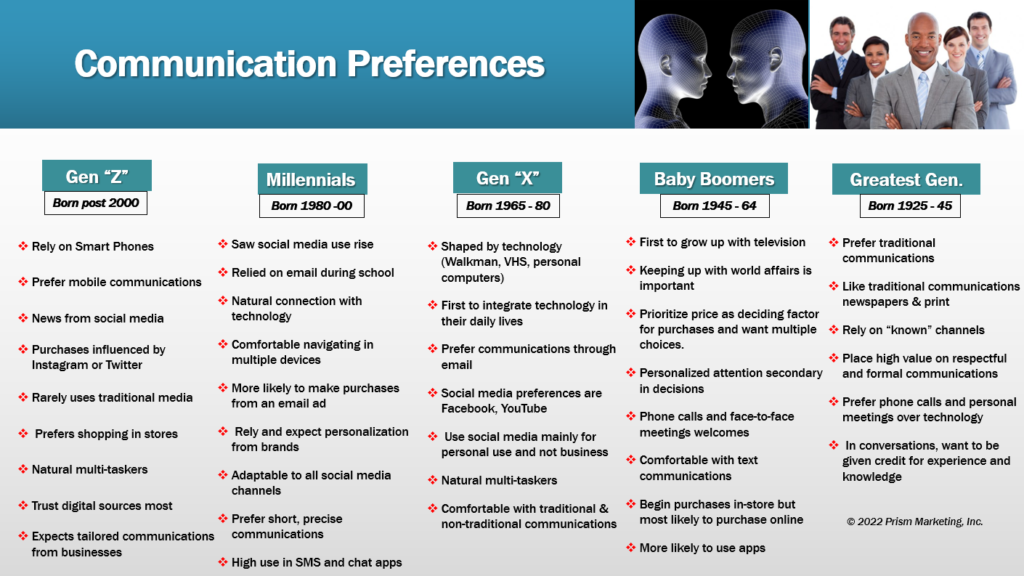One of the keys to communicating effectively is to be able to tailor your communication to your audience. This can be achieved in various ways and, if done correctly, will allow you to engage your audience quickly and with optimal results.
Know The Audience
In business, you’ll communicate with a variety of different people in many different ways. These may include marketing, networking, staff meetings, client and supplier meetings, disciplinary procedures, as well as communicating with regulators or government agencies. As such, having a thorough understanding of your audience is crucial so that you can adapt your message and tone of voice to best suit their needs.
Communication Objectives
It’s vital to think about the objectives of each communication, as this will help you design and deliver your message. You can then analyze your audience to anticipate their reactions and tailor your message, tone, and medium.
For example, are you communicating with customers to inform them of a change to your brand, or are you writing to them to promote new products and encourage sales? Each objective will result in very different messaging, including content, tone of voice, and the communications channel you employ.
Communicating Through Different Channels
Thinking about the channel you are using is also crucial for effective communication as a business. For example, the message given to sales staff when undertaking customer due diligence checks over the phone, would be entirely different from the tone of voice used when writing a Tweet or email about your latest product launch or a sale item.
As such, it’s important to think about audience segmentation and which channels of communication each of your target audience groups will most likely be using. For a restaurant, sending a text to remind a customer of their upcoming reservation would work whereas communicating with a business customer, sticking to email and telephone communication to meet with clients is more commonplace.
Adapting Communication
Whenever you communicate with an audience, you should be measuring and assessing their reaction, whether that’s in terms of sales, inquiries, leads, or even direct feedback. Each time you do this, you’ll learn more about what works and what doesn’t. You’ll then be able to refine your next communication with that audience to better meet your objectives.
Labels & Psychographics
In today’s world, labels are normally a bad thing. Marketers have been using labels and psychographics for decades to better communicate and target customers. If you don’t know the term “psychographics” it means the study and classification of people according to their attitudes, aspirations, and other psychological criteria, especially in market research. Take a look at the bottom chart and you can see guidelines of how psychographics can work for a business and determine what channels might work best.

The first thing you will notice is that no one strictly fits into these categories but are a very good guide when communicating with a wide diverse audience set.
Adapting your communication style is also important depending on if the communication is face-to-face or digital. For example, in-person communication with customers or team members will allow you to pay attention to body language and adapt your tone or message accordingly. Meanwhile, over email or digital communication, it’s important to take extra time to consider if your communication fits the right tone for your audience, as this more linear form of communication won’t offer as much feedback as in-person communication.
Failing to modify your communication style to the audience can result in confusion, misunderstanding, and even offend. It’s therefore essential that business owners take the time to fully assess which communication style and the channel is best suited to each situation.
If you want a larger version of this graphic, feel free to reach out at info@prismarketing.com and I will be happy to send you a copy.
Mark Thomas is a nationally-recognized integrated marketing professional that has worked for major brands such as DuPont, Volvo, Invisible Fence, and Continental Airlines. In 2018, Thomas was named as one of the top social media experts by being named to PR News’ “Social Media Movers & Shakers” list. In June, he added to his 19 national and regional marketing awards by winning his second “Telly” award for a TV show he created for the City of Bristol.

